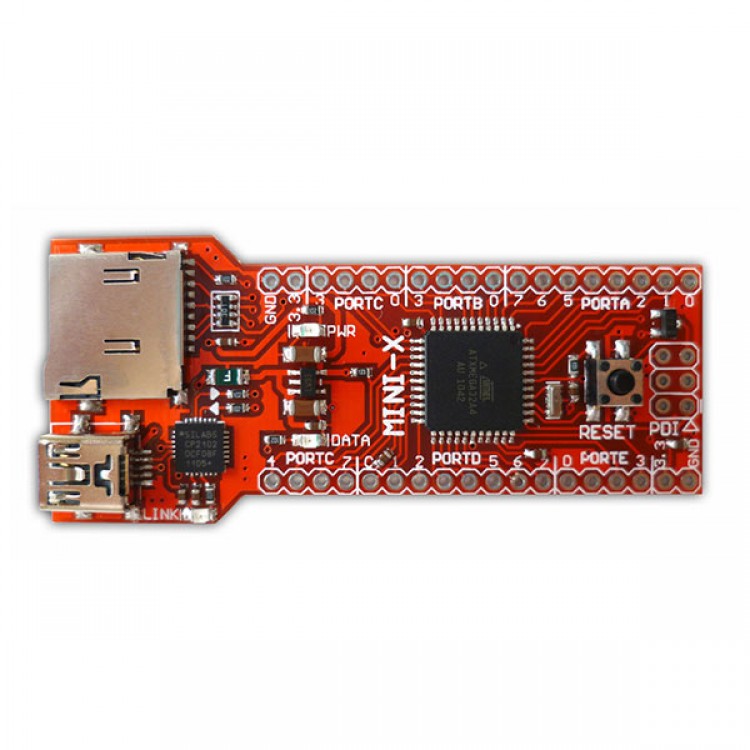
| Quantity | 3+ units | 10+ units | 30+ units | 50+ units | More |
|---|---|---|---|---|---|
| Price /Unit | $19.73 | $19.32 | $18.72 | $17.92 | Contact US |
 LC29HBS Dual Band Multi-constellation Base Station GNSS Module + Antenna with RTK Function GPS/BDS/Galileo/QZSS/GLONASS
$45.10
LC29HBS Dual Band Multi-constellation Base Station GNSS Module + Antenna with RTK Function GPS/BDS/Galileo/QZSS/GLONASS
$45.10
 LC29HBS Dual Band Multi-constellation Base Station GNSS Module with RTK Function GPS/BDS/Galileo/QZSS/GLONASS
$33.44
LC29HBS Dual Band Multi-constellation Base Station GNSS Module with RTK Function GPS/BDS/Galileo/QZSS/GLONASS
$33.44
 LC29HDA Dual Band Multi-constellation Mobile Station GNSS Module + Antenna with RTK Function GPS/BDS/Galileo/QZSS/GLONASS
$49.96
LC29HDA Dual Band Multi-constellation Mobile Station GNSS Module + Antenna with RTK Function GPS/BDS/Galileo/QZSS/GLONASS
$49.96
The Mini - ATX Atxmega32A4 IO Board USB Development Board TF Card
ATxmega32A4 features
U within 32 k + 4 k (BOOT) flash, 4 k SRAM and block 2 k EEPROM
U 4 channels of DMA
U 8 channel events trigger system
U five PWM generator, 16-bit timer input acquisition
U five USART support IRDA
U 2 TWI (I2C SMbus)
U 2 SPI
U ultra low power 16-bit counter RTC real-time clock
U 2 dozen top 2 m sampling rate of ADC, the 12 input port
U a two channel of DAC top 1 m converting speed
U 2 analog comparator
U all IO pin can generate interrupts
U independent watchdog clock
U AES, DES encryption engine
U 44 feet TQFP package, 34 IO port can be configured
U rate
0-12 m @ 1.6 V - 3.6 V
0 to 32 m @ 2.7 V to 2.7 V
The board resources:
1. Turn CP2102 USB serial port to update the program (USBBOOT)
2. The TF card, the file system
3. Independent LED display CPU working condition
4. Reset circuit, the reset button
5. 8 m system crystal by PLL chip within 32 m Hz frequency doubling to high speed
6. PDI program download interface
7. All the IO lead
Basic programming examples:
1. The ADC sampling routine (including query mode and interrupt mode)
2. The analog comparator routines (query mode and window interrupt mode)
3. Guide the programming routines (via a serial port to load the application)
4. A 128 - bit key DES encryption engine routines
5. The clock system routines (internal)
6. 12 DAC output routines
7. The DMA controller operation routines
8. Internal EEPROM read and write routines
9. The event system operating routines
10. The application of the interrupt controller routines
11. IO interface input reads and interrupt routines
12. The internal real time clock RTC routines
13. The SPI interface to read and write routines
14. The timer routines
1) general timer interrupt
2) the input acquisition function
3) the signal frequency and duty ratio measurement
4) to produce PWM signal, adjustable duty ratio
5) event counter
6) will be combined into a two 16 bit timer 32-bit timers
15. TWI interface from the host machine routines
16. USART serial interface routines (query mode and window interrupt mode)
17. The watchdog routines (normal mode and window mode)
18. The FAT file system based on TF card
The inadequacy of UCOS operating system applications
The mini ATX physical size